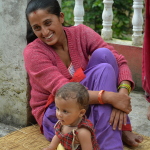Not Such an Odd Couple: Building Trust Between Scientists and Journalists
If you’re a health journalist, some of your most important contacts are often the scientists working in any number of fields associated with health. They’re the ones who provide the context, the background and the caveats when it comes to writing a public health story based on evidence. At the heart of these professional relationships lie trust and access – two things that are either in short supply, or can quickly unravel if a journalist gets a fact wrong or misrepresents the evidence for whatever reason.
When Internews was designing its Health Media Project (HMP) in Kenya, the team identified this critical relationship between science and the media as a fundamental issue, but one that is easily overlooked. To bridge the gap between the two, the health media team developed a roster of scientists with the understanding that those on the list would be accessible to the media, would be willing to be interviewed and help separate out the complexities often associated with health topics, and encourage accountability and transparency.
Kenya’s science buddy system – a first for the country – was born.
Both popular and effective, this simple tool has seen some 20 scientists and health and medical professionals sign up since its launch in the capital Nairobi and Mombasa on the coast. Both cities represent a dynamic media landscape, while Coast is also home to the Kenya Medical Research Institute (KEMRI). At the Mombasa launch of the science buddy system, journalists noted that for the first time they were working together with the science community to benefit the public. The launch was also an opportunity for journalists to meet face to face with prominent researchers and other health professionals working in their region. Acknowledging that those working in the science community are sometimes difficult to reach, the Coast Provincial Director of the Ministry of Public Health and Sanitation, Dr. Anisa Omar noted: “As scientists you need to be there. How many of us know exactly when our press releases will be made public and make ourselves available for interviews?”
Journalists don’t just merely inform; if they are good at what they do, they provide information that is meaningful, that engages their audiences and results in change. With this in mind, the science buddy system is part of Internews’ health media project’s overall integrated and innovative approach aimed at fostering a supportive environment that teaches journalists how to engage their audiences and produce health stories that result in change at macro, meso and micro levels. Ideally, the health stories produced will bring about structural change with regard to policies, or shifts in the public debate. And equally important for those who work in health communications – the scientists who drive social and behaviour change communication – are the stories that alter individuals’ knowledge, beliefs and behavior related to critical health issues.









Leave a Reply
Want to join the discussion?Feel free to contribute!